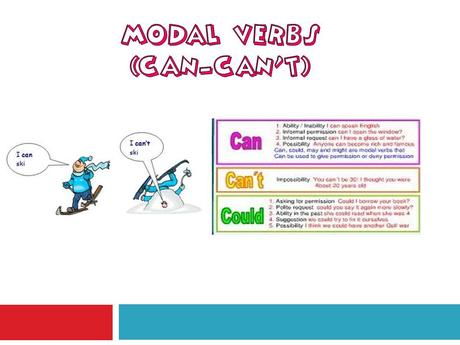
Can you speak English? Can I help make it easier for you? The questions I am asking are formed by using the modal verb "can". It is a very important modal verb that is used all the time so I am going to show you how and when to use it correctly.
Parli inglese? Posso aiutarti a renderlo più semplice? Come puoi vedere queste domande si formano con il verbo modale "can". Si tratta di un verbo modale molto importante e molto frequente, per cui ora ti spiegherò come usarlo correttamente.
Ready? Let's go!
can is used for the following:
"Can" si usa nei seguenti casi:
- to ask or give permission
- to make requests.
Per fare richieste. Per chiedere o dare un permesso Per esprimere possibilità e abilità
To talk about ability or possibility, "can" is usually placed before the action verb. For example:
Per parlare di abilità e possibilità, "can" si colloca di solito prima del verbo dell'azione. Ad esempio:
To form questions asking for permission, "can" is placed at the beginning of the sentence.
Per formulare domande per chiedere permesso, "can" si colloca all'inizio della frase.
* Can you please help me paint my house this afternoon?
* Can you give me a lift to work?
Mi puoi dare un passaggio al lavoro? Oggi pomeriggio mi puoi aiutare a dipingere casa mia per favore? Mi fa un caffè per favore?
To give permission, "can" is placed after the subject.
Per dare il permesso invece "can" va dopo il soggetto.
To form questions making requests, "can" is placed at the beginning of the sentence.
Per formulare delle richieste, "can" si posiziona all'inizio della frase.
Look at some examples:
For negatives we use "cannot" or the contraction "can't", for example:
Per le negazioni si usa "cannot" o la contrazione "can't", ad esempio:

